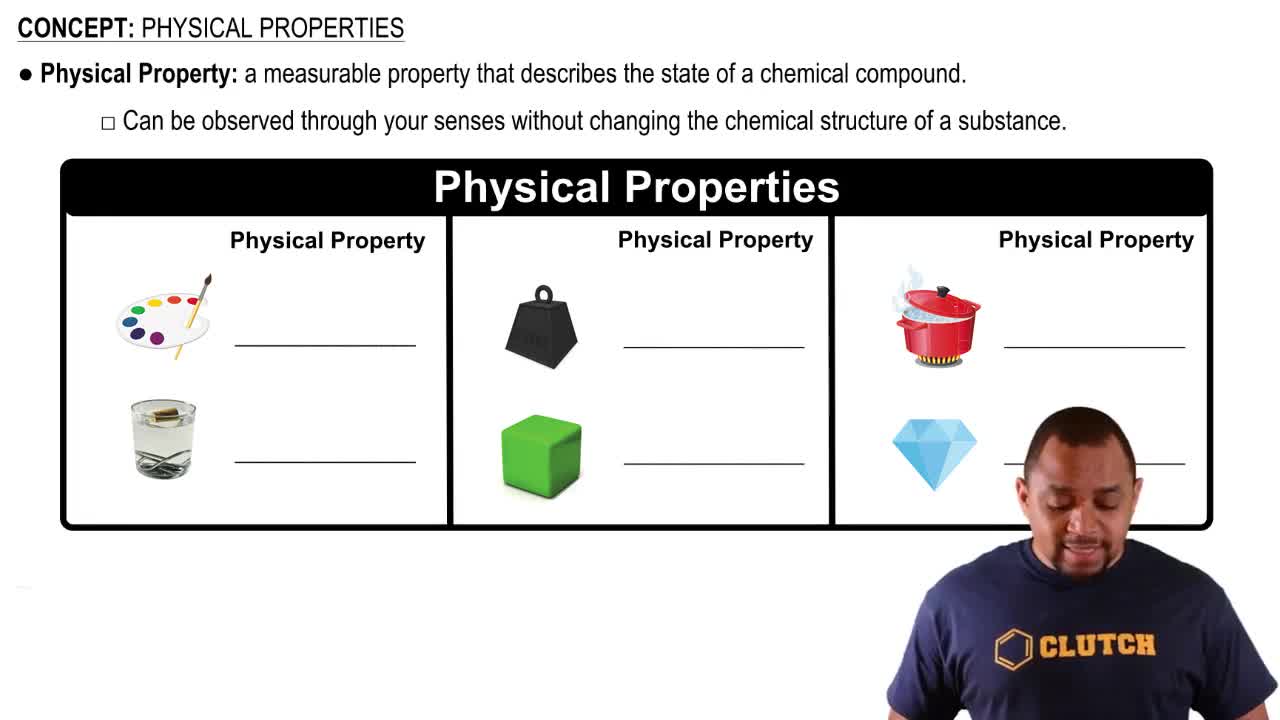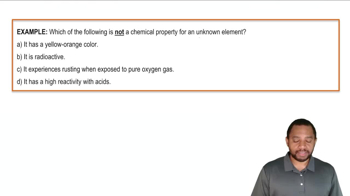In the process of attempting to characterize a substance, a chemist makes the following observations: The substance is a silvery white, lustrous metal. It melts at 649 °C and boils at 1105 °C. Its density at 20 °C is 1.738 g/cm3. The substance burns in air, producing an intense white light. It reacts with chlorine to give a brittle white solid. The substance can be pounded into thin sheets or drawn into wires. It is a good conductor of electricity. Which of these characteristics are physical properties, and which are chemical properties?
Label each of the following as either a physical process or a chemical process: b. boiling a cup of water
 Verified step by step guidance
Verified step by step guidance
Verified video answer for a similar problem:
Key Concepts
Physical Process

Chemical Process

Boiling Point

(a) Read the following description of the element zinc and indicate which are physical properties and which are chemical properties. Zinc melts at 420 °C. When zinc granules are added to dilute sulfuric acid, hydrogen is given off and the metal dissolves. Zinc has a hardness on the Mohs scale of 2.5 and a density of 7.13 g/cm3 at 25 °C. It reacts slowly with oxygen gas at elevated temperatures to form zinc oxide, ZnO.
(b) Which properties of zinc can you describe from the photo? Are these physical or chemical properties?
Label each of the following as either a physical process or a chemical process: c. pulverizing an aspirin
A match is lit and held under a cold piece of metal. The following observations are made: (a) The match burns. (b) The metal gets warmer. (c) Water condenses on the metal. (d) Soot (carbon) is deposited on the metal. Which of these occurrences are due to physical changes, and which are due to chemical changes?
For each of the following processes, would filtration, distillation, or chromatography be the most effective separation technique:
a. removing the pulp from freshly squeezed orange juice,
b. separating a food dye into its individual components,
c. desalinating seawater?
